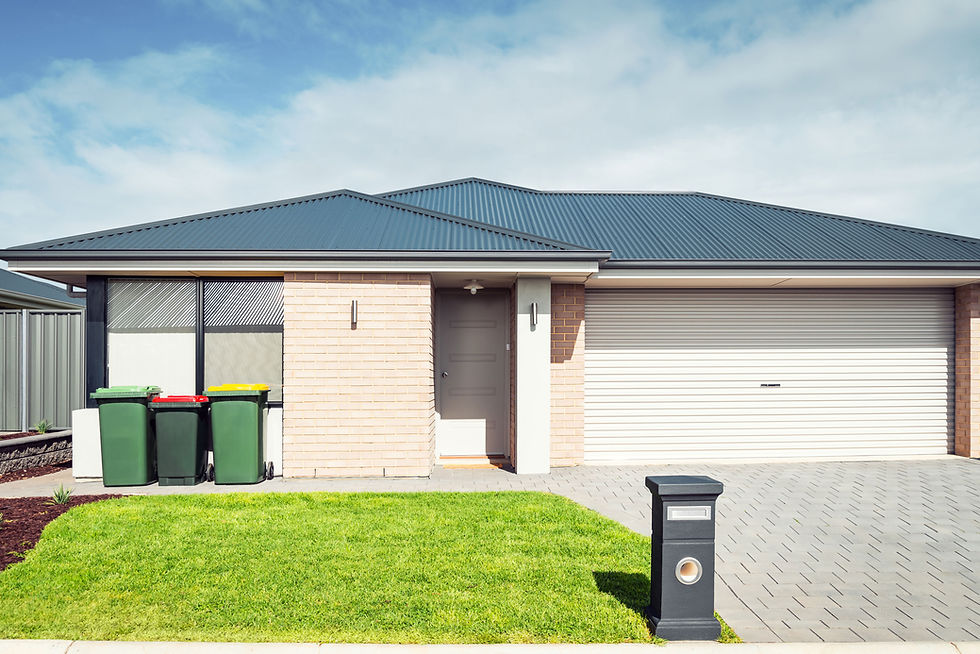The Future of Roofing: Innovative Materials and Technologies
- Dardanoi Group
- Aug 20, 2024
- 4 min read

The roofing industry is on the brink of transformation, driven by advancements in materials and technologies that promise to make roofs more durable, sustainable, and energy-efficient. As homeowners and businesses alike seek more innovative solutions to protect their properties, the future of roofing is becoming increasingly exciting. Here’s a look at some of the key trends and innovations that are shaping the future of roofing.
1. Solar Roofing: Powering Homes from Above
One of the most talked-about innovations in roofing is the integration of solar technology directly into roofing materials. Solar shingles and tiles are designed to blend seamlessly with traditional roofing while harnessing solar energy to power homes and businesses. Unlike traditional solar panels, which are mounted on top of an existing roof, solar shingles are part of the roof itself, providing both aesthetic appeal and functionality. As solar technology continues to improve, we can expect solar roofing to become more affordable and efficient, making it a mainstream option for energy-conscious consumers.
2. Green Roofs: Bringing Nature to the Rooftop
Green roofs, which involve growing vegetation on rooftops, are gaining popularity as a way to improve energy efficiency, reduce urban heat islands, and enhance air quality. These eco-friendly roofs provide natural insulation, helping to regulate building temperatures and reduce energy consumption. Additionally, green roofs can absorb rainwater, reducing runoff and alleviating pressure on stormwater systems. As cities around the world grapple with environmental challenges, green roofs offer a sustainable solution that benefits both people and the planet.
3. Cool Roofs: Reflecting Heat for Energy Savings
Cool roofs are designed to reflect more sunlight and absorb less heat than standard roofs. By using materials with high solar reflectance, cool roofs help to lower the temperature of the roof surface, reducing the need for air conditioning and lowering energy costs. These roofs are particularly beneficial in hot climates, where they can significantly reduce a building’s cooling load. As energy efficiency becomes a priority for homeowners and businesses, cool roofs are expected to become more widely adopted.
4. Recycled Roofing Materials: Sustainable Choices for the Environment
The demand for sustainable building materials is driving the development of roofing products made from recycled materials. Recycled shingles, tiles, and other roofing components are not only environmentally friendly but also offer durability and performance comparable to traditional materials. For example, roofing materials made from recycled rubber, plastic, and metal are gaining traction as eco-conscious consumers seek ways to reduce their environmental footprint. The use of recycled materials in roofing also helps to divert waste from landfills, contributing to a more sustainable construction industry.
5. Self-Healing Roofs: Extending Roof Lifespan
Imagine a roof that can repair itself after damage—this is the promise of self-healing roofing materials. These innovative materials contain microcapsules filled with a healing agent that is released when the material is damaged, effectively sealing small cracks and preventing leaks. While still in the early stages of development, self-healing roofs have the potential to significantly extend the lifespan of roofing systems, reducing the need for repairs and replacements. As this technology advances, it could revolutionize the way we think about roof maintenance.
6. Smart Roofing: Integrating Technology for Better Performance
The rise of smart technology is making its way into roofing, with the development of smart roofs that can monitor and respond to environmental conditions. Equipped with sensors and connected to building management systems, smart roofs can detect issues such as leaks, temperature fluctuations, and humidity levels in real-time. This data allows property owners to address problems before they escalate, potentially saving thousands of dollars in repair costs. Additionally, smart roofs can be integrated with other smart home technologies, contributing to overall energy efficiency and comfort.
7. Lightweight and Durable Composite Materials
The future of roofing may also see a shift towards lightweight composite materials that offer superior durability and strength. These materials, often made from a combination of polymers and other high-performance components, are designed to withstand extreme weather conditions, resist impact, and last longer than traditional roofing materials. Their lightweight nature also makes them easier to install, reducing labor costs and the overall weight load on a building’s structure. As research into composite materials continues, we can expect them to play a significant role in the roofing industry.
8. Energy-Generating Roof Tiles
Beyond solar shingles, the concept of energy-generating roof tiles is expanding to include other forms of renewable energy. For example, some innovative tiles are being developed to generate electricity from wind or even rain. These tiles work by capturing kinetic energy and converting it into electricity, providing an additional source of power for buildings. While still in the experimental phase, these energy-generating tiles represent the potential for roofs to become multi-functional energy producers.
The future of roofing is bright, with a host of innovative materials and technologies set to change the way we protect and enhance our homes and businesses. From solar and green roofs to smart systems and self-healing materials, these advancements promise to make roofing more sustainable, efficient, and resilient. As these technologies continue to evolve, homeowners and property managers will have more options than ever before to choose a roofing solution that meets their needs and contributes to a better, greener world.





Comments